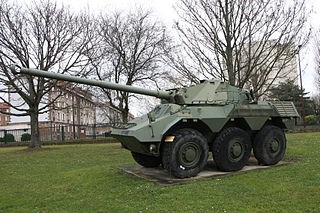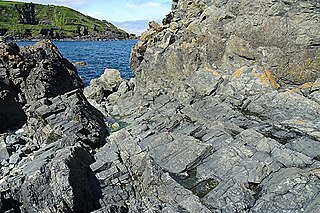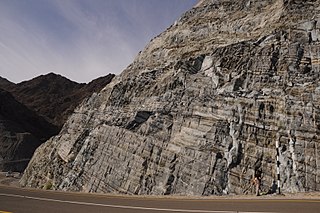This article needs additional citations for verification .(January 2021) |

Vehicle registration plates of Oman started in 1970. The current version started in 2001.
This article needs additional citations for verification .(January 2021) |

Vehicle registration plates of Oman started in 1970. The current version started in 2001.
There are several type of plates in Oman: (Private / Taxi / Commercial / learn driving/ government / political body / Authority Consulate / UN / Tractor / Bicycle mechanism / export / checking / rental)
| Vehicle types [1] | ||||
|---|---|---|---|---|
| Type | Example | Meaning | ||
| Private | | yellow = private vehicle | ||
| Taxi | | red = non-private vehicle | ||
The style is 99999 X(X(X)) with Arabic numbers followed with letters. X is district registered to:

| Letter(s) | District |
|---|---|
| A | Musqat |
| B | Batinah |
| DH | Dhahira |
| J | Junabiah |
| M | Musandam |
| MCT | Musqat Capital Town |
| SH | Sharqiya |

Oman, officially the Sultanate of Oman, is a country located in West Asia. It is situated on the southeastern coast of the Arabian Peninsula, and spans the mouth of the Persian Gulf. Oman shares land borders with Saudi Arabia, the United Arab Emirates, and Yemen, while sharing maritime borders with Iran and Pakistan. Oman has a population of 5,492,196 and is ranked the 120th most populous country in the world.

Scotia is a Latin placename derived from Scoti, a Latin name for the Gaels, first attested in the late 3rd century. The Romans referred to Ireland as "Scotia" around 500 A.D. From the 9th century on, its meaning gradually shifted, so that it came to mean only the part of Britain lying north of the Firth of Forth: the Kingdom of Scotland. By the later Middle Ages it had become the fixed Latin term for what in English is called Scotland.
Obduction is a geological process whereby denser oceanic crust is scraped off a descending ocean plate at a convergent plate boundary and thrust on top of an adjacent plate. When oceanic and continental plates converge, normally the denser oceanic crust sinks under the continental crust in the process of subduction. Obduction, which is less common, normally occurs in plate collisions at orogenic belts or back-arc basins.

Mary of Modena was Queen of England, Scotland and Ireland as the second wife of James II and VII. A devout Catholic, Mary married the widower James, who was then the younger brother and heir presumptive of Charles II. She was uninterested in politics and devoted to James and their children, two of whom survived to adulthood: the Jacobite claimant to the thrones, James Francis Edward, and Louisa Maria Teresa.

A vehicle registration plate, also known as a number plate, license plate or licence plate, is a metal or plastic plate attached to a motor vehicle or trailer for official identification purposes. All countries require registration plates for road vehicles such as cars, trucks, and motorcycles. Whether they are required for other vehicles, such as bicycles, boats, or tractors, may vary by jurisdiction. The registration identifier is a numeric or alphanumeric ID that uniquely identifies the vehicle or vehicle owner within the issuing region's vehicle register. In some countries, the identifier is unique within the entire country, while in others it is unique within a state or province. Whether the identifier is associated with a vehicle or a person also varies by issuing agency. There are also electronic license plates.

West Asia, also called Western Asia or Southwest Asia, is the westernmost region of Asia, as defined by some academics, UN bodies and other institutions, and includes Anatolia, the Arabian Peninsula, Iran, Mesopotamia, the Armenian Highlands, the Levant, the island of Cyprus, the Sinai Peninsula, and the southern part of the Caucasus Region (Transcaucasia). The region is considered to be separated from Africa by the Isthmus of Suez in Egypt, and separated from Europe by the waterways of the Turkish Straits and the watershed of the Greater Caucasus. Central Asia lies to its northeast, while South Asia lies to its east. Twelve seas surround the region (clockwise): the Aegean Sea, the Sea of Marmara, the Black Sea, the Caspian Sea, the Persian Gulf, the Gulf of Oman, the Arabian Sea, the Gulf of Aden, the Red Sea, the Gulf of Aqaba, the Gulf of Suez, and the Mediterranean Sea. The area contains the vast majority of the similarly defined Middle East, but excluding the African part of Egypt, and including the southern part of the Caucasus.

The Arabian Plate is a minor tectonic plate in the Northern and Eastern Hemispheres.
The most common format for vehicle registration plates in Romania consists of black letters on white background in the format CC 12 ABC, where CC is a two letter county code, 12 is a two digit group, and ABC is a three letter group. For Bucharest, the format is B 12 ABC or B 123 ABC, where B is code for Bucharest city, 12 and 123 is a two or three digit group, and ABC is a three letter group. The left side of the plate bears a blue vertical strip displaying the 12 stars of the European Union and the country code of Romania (RO). Between 1992-2007 the band featured the Romanian flag instead of the 12 stars. All lettering comes from the Latin alphabet.
Oman Air is the national airline of the Sultanate of Oman. Based at Muscat International Airport in Seeb, Muscat, it operates domestic and international passenger services, as well as regional air taxi and charter flights.

The Musandam Governorate is a governorate of Oman. With the exception of the exclave of Madha, it is located on the Musandam Peninsula, which juts into the Strait of Hormuz, the narrow entry into the Persian Gulf, from the Arabian Peninsula. The Governorate is also an exclave, separated from the rest of Oman by the United Arab Emirates. Its location gives Oman partial control, shared with Iran, of the strategic strait. In the northern section of Musandam, around Kumzar, the language is Kumzari, which is a southwestern Iranian language closely related to Larestani and Luri. The Musandam Peninsula has an area of 1,800 km2 (690 sq mi) and a population of 31,425 people.
Vehicle registration plates of Poland indicate the region of registration of the vehicle given the number plate.

The Battle of Bicocca or La Bicocca was fought on 27 April 1522, during the Italian War of 1521–26. A combined French and Venetian force under Odet de Foix, Vicomte de Lautrec, was decisively defeated by an Imperial–Spanish and Papal army under the overall command of Prospero Colonna. Lautrec then withdrew from Lombardy, leaving the Duchy of Milan in Imperial hands.

The Renault VBC-90 is a six-wheeled French armoured car carrying a 90mm high-velocity gun mated to a sophisticated fire control computer and ranging system. It was developed primarily for internal security or armed reconnaissance purposes. Modeled after Renault's Véhicule de l'Avant Blindé (VAB) armoured personnel carrier, the VBC-90 was engineered in concert with Saviem and Creusot-Loire. One was also built in prototype form by Argentina under license, where it was known as the Vehículos de Apoyo y Exploración. VBC-90s were available with various chassis configurations resembling both the VAB and the Berliet VXB-170.

Malaysian registration plates are displayed at the front and rear of all private and commercial motorised vehicles in Malaysia, as required by law. The issuing of the number plates is regulated and administered by the Malaysian Road Transport Department or JPJ.
Duqm is a port town on the Arabian Sea in central-eastern Oman. As of 2010, the population was 11,200.
Standard Bulgarian vehicle registration plates display black glyphs on a white background, together with – on the left-hand side of the plate – a blue vertical "EU strip" showing the flag of Europe and, below it, the country code for Bulgaria: BG.

A sheeted dyke complex, or sheeted dike complex, is a series of sub-parallel intrusions of igneous rock, forming a layer within the oceanic crust. At mid-ocean ridges, dykes are formed when magma beneath areas of tectonic plate divergence travels through a fracture in the earlier formed oceanic crust, feeding the lavas above and cooling below the seafloor forming upright columns of igneous rock. Magma continues to cool, as the existing seafloor moves away from the area of divergence, and additional magma is intruded and cools. In some tectonic settings slices of the oceanic crust are obducted (emplaced) upon continental crust, forming an ophiolite.

The Royal Navy of Oman, abbreviated RNO, is the maritime component of the Royal Armed Forces of the Sultanate of Oman. Given its long coastline and strategic location along the Indian Ocean, as well as being close to the Strait of Hormuz, the Royal Navy is one of the priorities of the government of Oman. It has a fleet of gunboats, fast missile boats and support, training, cargo and hydro-graphical survey vessels, which can be deployed to defend the territorial waters and coastline of Oman as well as protect tankers passing through the Strait of Hormuz. The Royal Navy's headquarters are in Seeb, near the Muscat International Airport. A modernization program is ongoing, with the objective of creating a first rate fleet. Similarly, the Royal Oman Police's fleet, which operates smaller range boats and patrol crafts, is being updated due to raising tensions in the region.

The geology of Oman includes varied landscapes which are a blend of its geological history, and its climate over the past few million years. Rock outcrops in the Hajar, Huqf and Dhofar Mountains are a point of interest for international geologists. The rock record spans about 825 million years and includes at least three periods when the country was covered by ice. Oman, located at the southeast corner of the Arabian plate, is being pushed slowly northward, as the Red Sea grows wider. The lofty Hajar Mountains and the drowned valleys of Musandam are dramatic reminders of this. Generally speaking Oman is fairly quiescent tectonically. Musandan experiences occasional tremors as the Arabian Plate collides with the Eurasian Plate. During the Cretaceous Period Oman was located adjacent to a subduction zone and a portion of the upper mantle along with overlying seafloor volcanic rocks were thrust over the continental crust. This obducted sequence of ultramafic to mafic rocks is the Semail Ophiolite complex. The ophiolite is locally rich in copper and chromite orebodies.

The Hajar Mountains are the highest mountain range in the eastern part of the Arabian Peninsula, shared between northern Oman and eastern United Arab Emirates. Also known as "Oman Mountains", they separate the low coastal plain of Oman from the high desert plateau, and lie 50–100 km (31–62 mi) inland from the Gulf of Oman.